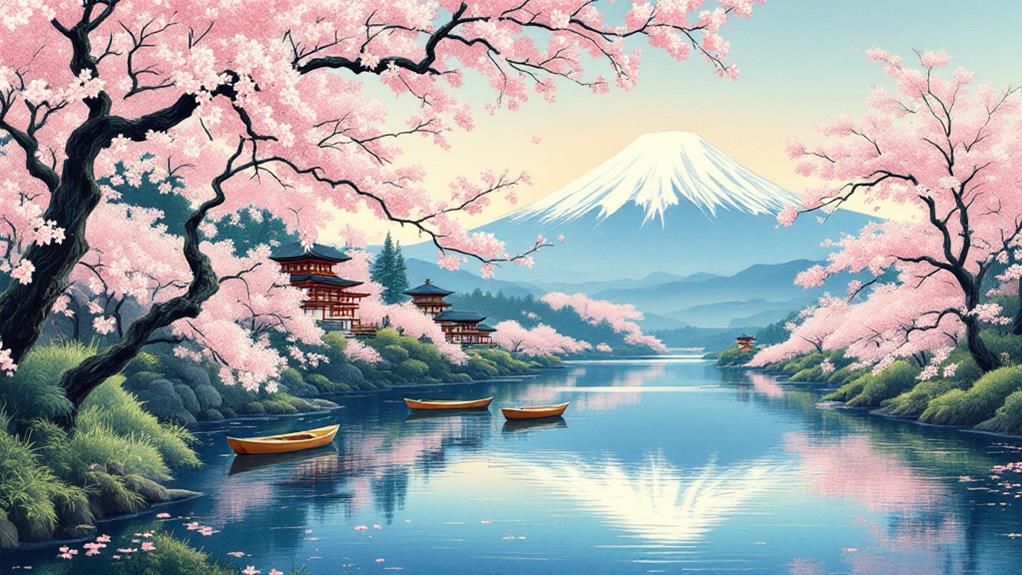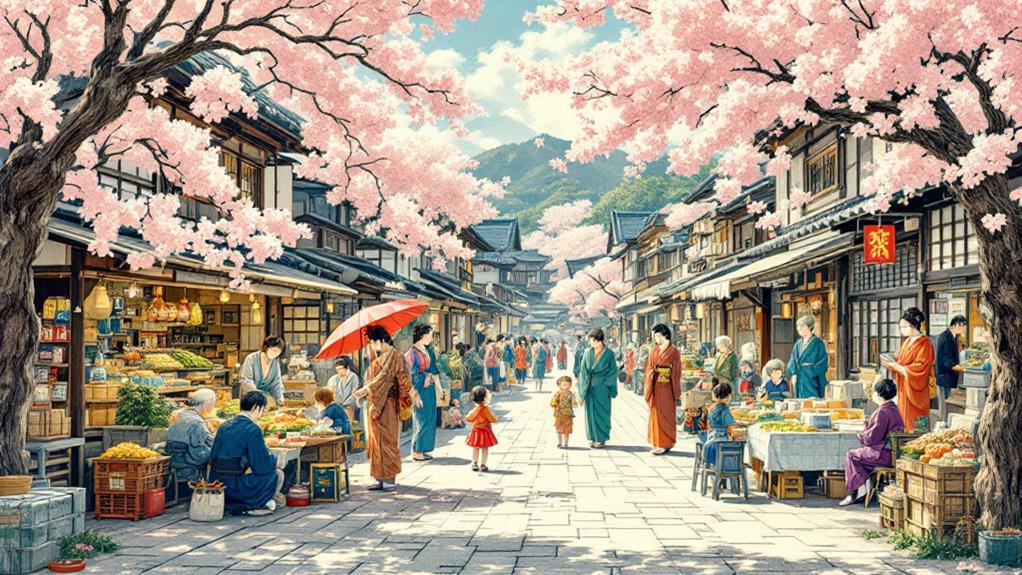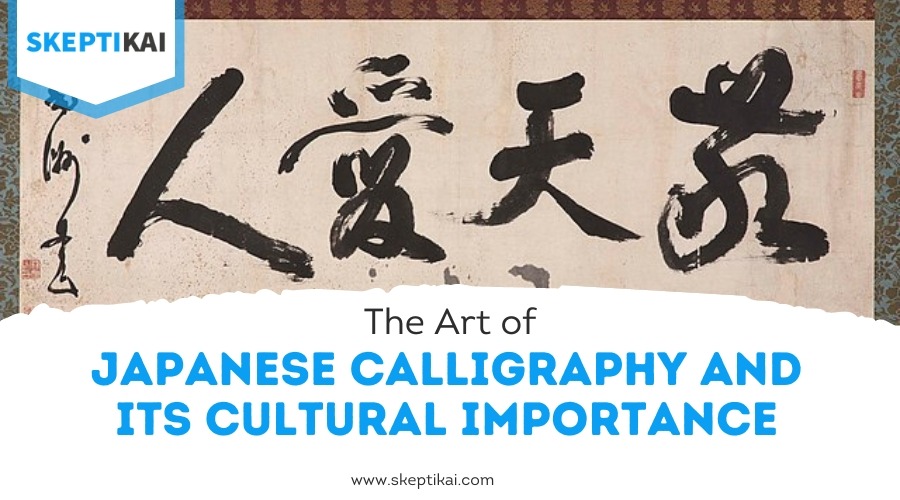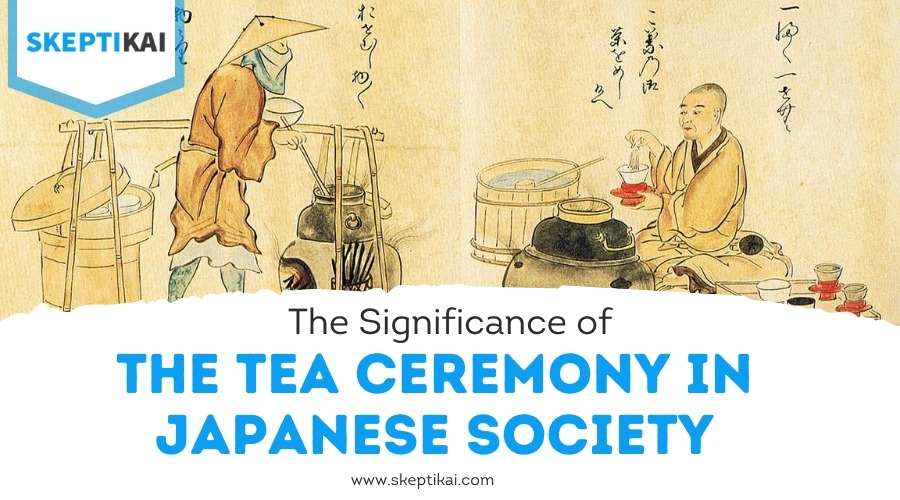How Do Japanese Woodblock Prints Reflect the Beliefs or Customs of the Culture?

Japanese woodblock prints encapsulate cultural beliefs and customs through rich depictions of religious themes, nature, and everyday life. You'll find serene Buddhas and Shinto rituals, embodying harmony and respect for spirituality. Artists like Hokusai and Hiroshige capture landscapes and seasons with reverence, reflecting life's transitory nature. These prints showcase lively Edo-period streets, highlighting social interactions and community spirit. Seasonal motifs like cherry blossoms evoke cultural practices and celebrate life's cycles. Folklore characters like dragons and kitsune carry symbolic meanings, showing societal values. Uncover deeper cultural insights woven into these artistic expressions by exploring further.
Depictions of Religious Themes
In Japanese woodblock prints, artists often capture the spiritual essence of religious themes with careful detail and lively hues. When you examine these prints, you'll notice how Buddhist motifs and Shinto rituals are intricately woven into the artwork. These elements aren't just decorative; they're essential to understanding the spiritual and cultural landscape of Japan. In many prints, you'll find Buddhist motifs like serene Buddhas, Bodhisattvas, and lotus flowers. These symbols are used to convey messages of peace, enlightenment, and the transience of life. Artists skillfully use these motifs to invite you into a contemplative state, reflecting the core teachings of Buddhism. Shinto rituals, on the other hand, emphasize purity, nature, and the connection between humans and Kami, the spirits or deities. Prints might depict festivals, shrine visits, or the purification rites that are central to Shinto practices. Through these depictions, you can sense the importance of harmony and respect for the divine in daily life. Furthermore, the colorful festivals showcased in these prints illustrate Shinto's role in fostering community ties and celebrating the interconnectedness of beings.
Celebration of Nature

Japanese woodblock prints vividly celebrate the beauty and power of nature, capturing its essence in every stroke. You'll find that these artworks often depict landscapes, flora, and fauna, reflecting the deep appreciation Japanese culture holds for the natural world. Each print is a tribute to natural beauty, showcasing mountains, rivers, and trees in perfect detail. Artists like Hokusai and Hiroshige became famous for their ability to portray the splendor and majesty of the environment. Seasonal harmony is a theme also prevalent in Japanese cuisine, where dishes like sushi elegantly mirror the changing seasons, embodying the same respect for nature's cycles seen in woodblock prints. In these prints, you can see how the changing seasons play an essential role. The concept of seasonal harmony is central, as artists use their works to depict the shifts from spring to summer, autumn to winter. Cherry blossoms in full bloom symbolize the fleeting nature of life, while snow-covered landscapes evoke a sense of calm and introspection.
Representation of Everyday Life

While Japanese woodblock prints often capture majestic natural landscapes, they also offer a fascinating glimpse into the rhythm of everyday life during their time. These prints serve as windows into the lively urban scenes of Edo-period Japan, where bustling streets and animated marketplaces come alive. You can almost hear the chatter as merchants sell their goods, and people from all walks of life engage in daily activities. The prints provide a visual narrative of how townsfolk interacted, showcasing everything from simple conversations to more complex social gatherings.
In these urban scenes, you see a range of social interactions that reflect the culture's customs and values. Artists captured moments of leisure, like people enjoying tea at a local teahouse or attending a theatrical performance. These depictions emphasize not just the economic activity but also the cultural and social dimensions of life. As you examine these prints, you gain an understanding of the societal roles and relationships that defined their communities. They highlight the importance of social harmony and connectivity, elements that were central to Japanese life. Through these artistic snapshots, you can appreciate the intricate tapestry of everyday existence in historical Japan.
Influence of Seasonal Changes

Often, Japanese woodblock prints vividly illustrate the profound influence of seasonal changes on both the natural world and human activities. As you investigate these prints, you'll notice how artists capture the essence of each season through seasonal motifs. Cherry blossoms in spring, lush green landscapes in summer, lively autumn leaves, and serene snow-covered scenes in winter are common depictions. These elements do more than just represent the seasons; they convey the cultural significance attached to each time of year.
In Japan, the seasons aren't just changes in weather; they're integral to cultural practices and daily life. Woodblock prints often portray people engaging in seasonal activities, like hanami (cherry blossom viewing) or momijigari (autumn leaf viewing). By including such activities, artists reflect the deep connection between nature and human experience.
As you investigate further, you'll see how these prints serve as visual calendars, marking the passage of time and the cyclical nature of life. The careful attention to detail and the choice of colors and subjects improve your understanding of how the Japanese view their environment. These prints emphasize the reverence for nature and its ever-changing beauty, deeply rooted in Japanese culture.
Symbolism in Festivals and Folklore

Beyond the changing seasons, woodblock prints also capture the rich symbolism found in Japanese festivals and folklore. When you investigate these prints, you'll notice how festival motifs are carefully integrated into the artwork. Each motif tells a story, regardless of whether it's the lively colors of a summer festival or the delicate beauty of cherry blossoms during Hanami. These elements aren't just decorative; they embody the essence of the festival itself, connecting you to the cultural celebrations that have been observed for centuries.
Folklore characters also have a significant presence in woodblock prints. You'll often find depictions of legendary creatures such as dragons and kitsune, each carrying deep symbolic meanings. Dragons might symbolize power and protection, while kitsune, the fox spirits, represent cunning and transformation. These characters are more than myth; they're woven into the fabric of Japanese cultural identity, teaching moral lessons and reflecting societal values.



